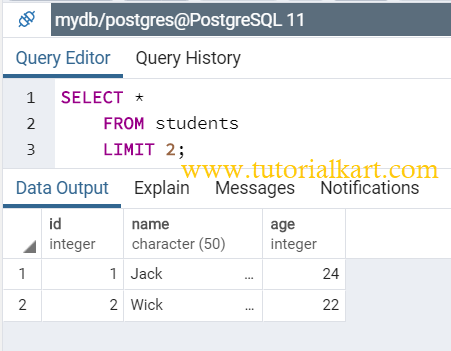It helps in breaking down complicated. SQL query examples for each SELECT FROM queries is. These statements are often referred to as common table expressions or CTEs.
The CTEs are like temporary tables that only exist during the execution of the query. The previous chapters explained how to create tables, how to fill them with data, and how to manipulate that data. Now we finally discuss how to retrieve. Secon gets the result and passes it to the outer query.
Thir executes the outer query. A subquery can return zero or more rows. To use this subquery, you use the IN operator in the WHERE clause. Diese Anweisungen, die häufig als allgemeine. Can they only combine simple SELECT statements?
PostgreSQL subquery with IN operator. JOIN‘s are welcome to the party as well. Let’s visit an example that filters with a WHERE clause and the LIKE operator. One can insert a single row at a time or several rows as. Sometimes it is useful to evaluate an expression or SELECT query but discard the result, for example when calling a function that has side-effects but no useful result value.
Following are some very important Complex SQL Queries Examples with. I have tried to explain each and every query in detail so that everyone will get idea of how it is executed step-by-step. WITH bietet eine Möglichkeit, Hilfsanweisungen für die Verwendung in einer größeren Abfrage zu schreiben. How complex can UNION queries be? Ensuring your queries can be reasoned about is critical to ensuring accuracy and CTEs are one great way of accomplishing that.
In truth, WHERE, GROUP BY, HAVING, and ORDER BY clauses can all be used in the SELECT queries that make up a UNION. I wonder if the performance of these two queries have difference, or if for postgresql it. As shown in the example below, at the end of the output you will have a section titled as indexes, if you have index in that table.
In the example below, table pg_attribute has two btree indexes. By default postgres uses btree index as it good for most common situations. Get current date and time using the following query. Following examples displays number of days between the current date and date_of_join of employees. I have a query that works on SQL Server to return customers that contain the string entered by the user by accepting parameters and using the LIKE keyword.

There are many ways to query data with R. This post shows you three of the most common ways: Using DBI Using dplyr syntax Using R Notebooks Background Several recent package improvements make it easier for you to use databases with R. The query examples below demonstrate some of the capabilities of these R packages. Select Database using psql. For example , recently I was facing a financial dataset of GB. The canonical answer is to create a view and use that with different WHERE and ORDER BY clauses in queries. But, depending on your query and your tables, that might not be a good solution for your special case.
A query that is blazingly fast with WHERE accounts. The test platform for this article is Psycopg Python 2. Any duplicate rows from the of the SELECT statements are eliminated. The UNION operator works under two conditions: The SELECT queries MUST return a similar number of queries. The problem with that is that queries typed into the psql console get saved in a history file. WITH Queries (Common Table Expressions) WITH provides a way to write auxiliary statements for use in a larger query.

The value- value-will create a range for us to compare the expression to. We need to create an example that shows how to apply the BETWEEN operator on numeric values. The “tablefunc” module provides the CROSSTAB() which uses for displaying data from rows to columns.
In this article i will try to explain different hierarchical queries in oracle sql with real life examples. Hierarchical queries are useful in reporting purpose and when user wants to fetch the data from hierarchical structure these queries are very useful. Before going to the details of hierarchical queries first question comes to the mind is.
Keine Kommentare:
Kommentar veröffentlichen
Hinweis: Nur ein Mitglied dieses Blogs kann Kommentare posten.